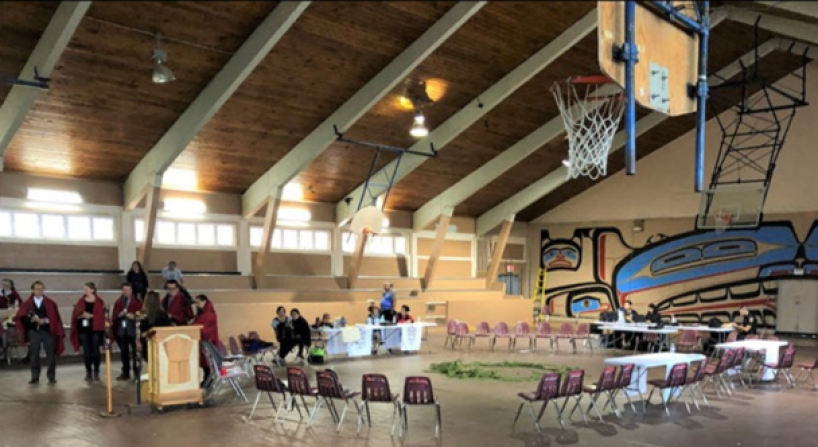Working towards reconciliation

On National Day for Truth and Reconciliation 2025, the BC Provincial Court announced its adoption of a Reconciliation framework outlining the principles that will guide its reconciliation efforts with Indigenous Peoples. How was it developed and what does it involve?
Developing a Reconciliation Framework
In 2024 Chief Judge Melissa Gillespie formed a Reconciliation Committee to develop a framework for advancing reconciliation. Composed of Indigenous and non-Indigenous judges, a judicial justice, and staff members, the Committee was led by Associate Chief Judge Wishart. It reviewed a draft framework created by the BC Court of Appeal and determined that the Provincial Court should adopt its key features but would require its own framework to reflect its unique challenges and opportunities.
Committee members held regular meetings. They also met with representatives of the BC First Nations Justice Council to learn about their Indigenous Justice Strategy and their experiences with other justice stakeholders creating reconciliation plans. Once the Committee completed a draft framework, it was circulated to the Court’s Indigenous Judges Council (a group composed of judges who identify as Indigenous) and to all judges, judicial justices and Integrated Judicial Services staff members. The consultation process led to thoughtful feedback that contributed to the Framework published today.
The Court’s commitment
The Provincial Court’s Reconciliation Framework is its commitment to learn from and better serve Indigenous people involved with the justice system. This includes improving access to justice by reducing the barriers Indigenous Peoples face while recognizing the Court’s neutrality and independence.
The Framework identifies three foundational areas of reconciliation to guide the Court in forming concrete action items:
- Relationship building
- Education and understanding
- Access to justice
It sets out general action items, some of which are already underway. Others can begin immediately, while some will require funding, resources and longer term planning. The Court will create an Action Committee to track specific action items, identify new action items and update the Framework as needed.
Efforts currently underway
In the last year, the Court’s relationship building activities included engaging with Indigenous groups to discuss topics like possibilities for Indigenous courts, restorative justice, and issues related to Indigenous youth in the justice system. Judges also participated in training for Indigenous court Elders.
Recent education programs for judges, judicial justices, judicial case managers and staff have all included topics related to Indigenous justice and the history, cultures, and unique systemic factors experienced by BC's Indigenous Peoples.
Working with Indigenous Peoples to increase their access to justice is an important part of the Court’s ongoing reconciliation efforts. Provincial Court sittings in Indigenous communities and nine Indigenous sentencing courts incorporate aspects of Indigenous cultures and practices to improve outcomes for Indigenous people.
In 2024 the Cowichan Tribes became the first Indigenous community in BC to assume authority over child and family services for its people. They designated the BC Provincial Court’s Duncan location as the court to be used when a court order is needed.
The Court also accepted invitations from the Ahousaht First Nation to sit in their Flores Island community and from the Tla-o-qui-aht Nation to sit in a conference centre created from the gymnasium of a former residential school. People in these communities have spoken positively about the impact of these moves.
Provincial Court judges continue the decades-long practice of travelling with court teams to remote Indigenous communities as part of our circuit courts. As well as providing these communities with access to justice, circuit courts build relationships and educate court team members. As they learn from Indigenous people about their history, customs, laws and challenges, court teams are able to incorporate restorative justice, reconciliation, and healing in their work.
The National Day for Truth and Reconciliation gives us a chance to reflect on how we can carry out commitment embodied in the Framework and develop specific action plans to advance reconciliation.
This page was printed from:
https://provincialcourt.bc.ca/news-notices-policies-and-practice-directions/enews/01-10-2025
